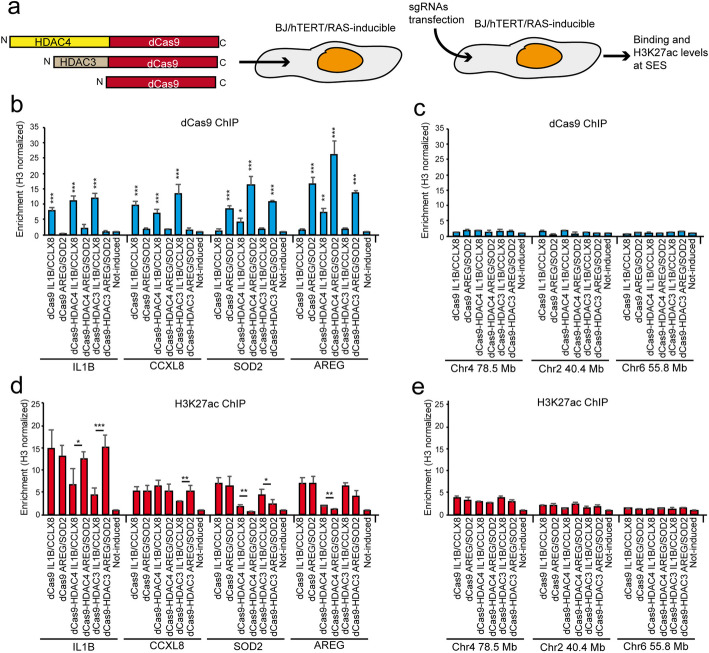Fig. 7.
The effect of a forced localization of HDAC3 or HDAC4 on the epigenetic status of selected SES. a Schematic representation of the experimental strategy. b ChIP-qPCR signals using the anti-Cas9 antibody for the indicated loci in BJ/hTERT/RAS cells transfected with the indicated dCas9 chimeras and IVT sgRNAs. The genomic region investigated is indicated with the closest-associated gene. c ChIP-qPCR signals using the anti-Cas9 antibody for the indicated loci in BJ/hTERT/RAS cells transfected with the indicated dCas9 chimeras and IVT sgRNAs. The genomic region is indicated by the relative coordinates. d ChIP-qPCR signals using the anti-H3K27ac antibody for the indicated loci in BJ/hTERT/RAS cells transfected with the indicated dCas9 chimeras and IVT sgRNAs. The genomic region investigated is indicated with the closest-associated gene. e ChIP-qPCR signals using the anti-H3K27ac antibody for the indicated loci in BJ/hTERT/RAS cells transfected with the indicated dCas9 chimeras and IVT sgRNAs. The genomic region is indicated by the relative coordinates. The sgRNAs used are indicated for each bar (e.g., dCas9 IL1B/CXCL8 means that 4sgRNA for IL1B and 4 for CXCL8 were used). Data are reported as mean ± SD and normalized on total H3 signal

